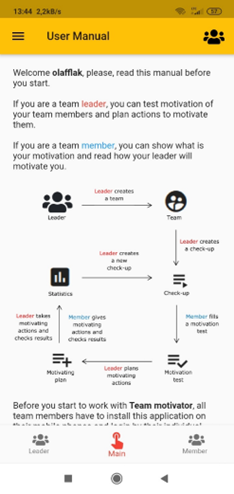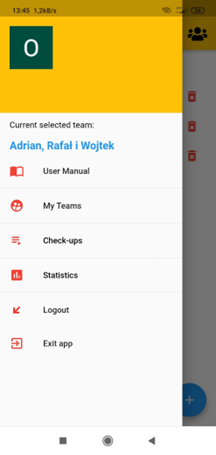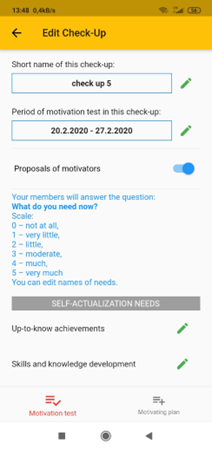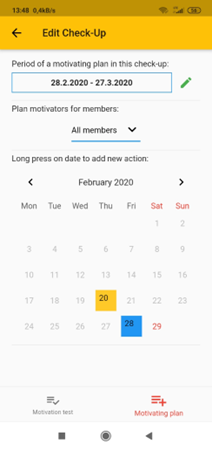Today I’m continuing the topic I started the day before yesterday – I’m introducing you to an application for motivating employees, built on the basis of the system of organizational terms. The application is an example of how a robot could easily perform two managerial activities – to study employee motivation and then plan motivational activities. And again survey motivation and plan motivational activities, and so on.
In a previous post, I showed the sequence of two managerial actions that are included in a manager’s activity of motivating employees. These two managerial actions have been implemented into a managerial tool in the form of an app for Android and iOS. We called the tool Team Motivator.
After installing the app on a phone, the user logs in with a Gmail account and is shown a screen with instructions for use, shown in Figure 1.

Figure 1. Instructions for using the Team Motivator application
The tool allows you to create a team by inviting people to join the team who have the application installed. I show the main functions of the application in Figure 2.

Figure 2. The main functions of the Team Motivator application
In the application, you can create a “Check-up” object, which includes two managerial actions:
Managerial action 1:
examine (derivative organizational term)
motivation (primary organizational term)
Managerial action 2:
plan (derivative organizational term)
motivation plan (primary organizational term)
Figure 3 shows the screen of managerial action 1 and Figure 4 of managerial action 2.

Figure 3. Motivation survey screen (managerial activity 1)

Figure 4. Motivation planning screen (manager activity 2)
In the next post, I will show what data the application records and how to use this data to build an artificial manager to motivate his employees.

